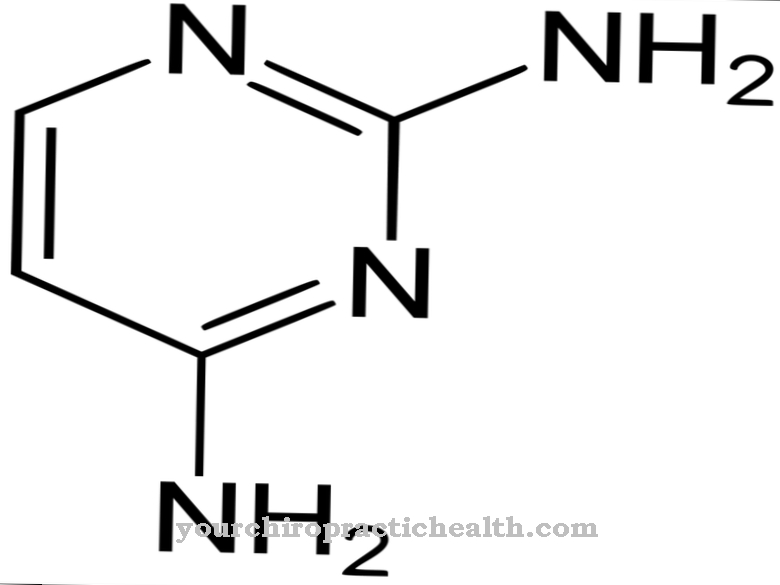Vatalanib is a substance that could be used in the future in the treatment of certain cancers. The active ingredient is currently still in development and has not been approved. Vatalanib's potential mechanism of action is based on its inhibition of the receptors of vascular endothelial growth factor (VEGF).
What is Vatalanib?

Vatalanib is an active pharmaceutical ingredient that may be used in the treatment of cancer. Vatalanib has the molecular formula C20H15ClN4; medical research also uses the code PTK787 / ZK 222584 as a designation. Vatalanib is a derivative of pyridine and aminophthalazine and is one of the vascular endothelial growth factor inhibitors.
So far, vatalanib has not been approved as a drug because it is still under development and studies are not yet sufficient. Although there is some evidence that vatalanib may be useful in the treatment of cancer, the data are inconsistent and more research is needed. Nevertheless, vatalanib is of increasing interest for medicine.
Pharmacological effect
According to the current state of research, Vatalanib appears to inhibit the receptor of the vascular endothelial growth factor, in English Vascular Endothelial Growth Factor Receptor, VEGF-R for short. The VEGF is a molecule that has a signaling effect in the organism and can thus transmit information from one cell to another. The molecule binds to a receptor for which the substance has the correct fit: the VEGF-R. The binding of VEGF to its receptor triggers a response in the cell to which that receptor belongs.
Doctors differentiate between different forms of VEGF and the associated receptors. So far, six variants of the signaling molecule and three different receptors have been identified that cannot react with one another at will. In particular, VEGF-A, which only appears to bind to receptors 1 and 2, may be associated with cancer and is therefore of great interest to researchers. A study by Wood and colleagues from 2000 concluded that vatalanib was primarily effective against VEGF-R1 and VEGF-R2.
Medical application & use
Medical research is developing vatalanib with a potential future use in the treatment of certain cancers. A study by Dragovich and colleagues looked at the use of vatalanib as a second phase of therapy for pancreatic adenocarcinoma. Adenocarcinoma is a specific type of cancer that can develop from glandular tissue. In this case, the tumor grows from the tissue of the epithelial cells. The pancreatic or pancreatic cancer seems to be based on changes in certain areas that stimulate the growth of cells and thereby cause the tumor to develop.
Chemotherapy may be a possible treatment, which was also the case in the study by Dragovich and colleagues in the first phase of therapy. However, some patients do not respond to the medication they are given and the treatment does not produce sufficient results. This is exactly the group that Dragovich and the rest of the research group focused on.
In the second therapy phase, the patients received vatalanib orally twice daily, gradually increasing the dose up to 1500 mg, in order to then keep it constant at 750 mg. After six months, the researchers compared their patients with previous pancreatic cancer patients and stated that the survival rate of around 30% for this type of cancer was quite favorable. However, medical professionals failed to establish a direct link between taking vatalanib and taking VEGF-R.
The findings are therefore inconclusive. Another study by Roodhart and Voest found no improvement in the survival rate, but found an improvement in progression-free survival (time between the start of treatment and the progression of the disease).
Risks & side effects
Overall, researchers such as Dragovich and colleagues and Wood et al. a. Vatalanib as well tolerated. The former research group documented fatigue, high blood pressure, pain in the abdomen (stomach) and irregularities in liver function tests as the most common side effects. Other sources also report diarrhea, vomiting, other indigestion, and dizziness.
Since vatalanib is not yet commercially available and there is still a need for research, the risks and side effects have not yet been conclusively researched; this also includes possible long-term effects.



























